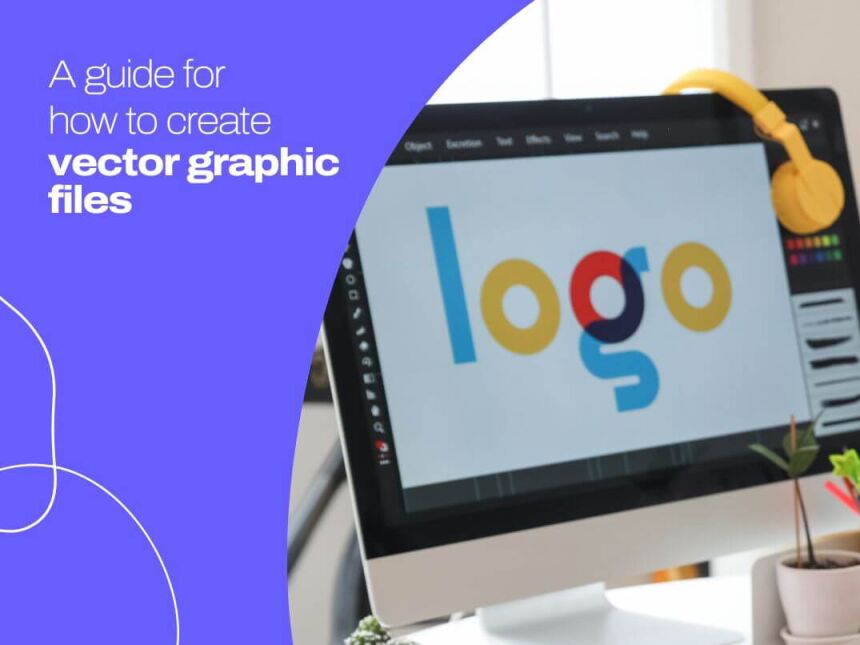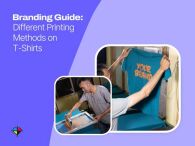What does it mean to vectorize an image? A professional guide
Learn what it means to vectorize an image, the benefits of vector formats, and get step-by-step guidance on how to create vector images for crisp, scalable designs perfect for business branding and promotional materials. Discover how you can get your business ahead with this practical skill.

In today's digital landscape, the art of image creation and formatting is more significant than ever. As businesses grow increasingly competitive, standing out visually has become essential. Avoid the mistake when an image becomes blurry.
This guide dives into everything you need to know about vectorizing an image. Read more about its benefits, types, how-to steps, and tips for success. If you have been curious about what it means to vectorize an image or how to create one, you are in the right place!
What is a vector image? (and why it matters for businesses)
A vector image is a digital graphic made up of paths and points rather than pixels. Unlike a raster image, which can become pixelated and blurry when you resize it, vector images allow for scaling. These lines and shapes stay clear and sharp at any size.
Vectorizing an image changes it into a clean and flexible format, reducing the chance of a blurry image. This format is great for many uses, like logos and promotional items. Think of a vector image as a blueprint: it's precise, endlessly adjustable, and reliable.
How do I know if my image files are vectors?
When ordering your products, you can first reach out to your graphic design team. They might already have a vector file for your logo.
Otherwise, if you don't have one, you can ask our team of promotional experts when you submit your artwork. We can vectorize and logo you send our way.
Once you receive it, you can keep it forever. That way, you can have it on hand when you order your next round of promotional swag.
Types of vector image formats
When learning how to make a picture vector format, it's crucial to understand the various vector file types and how they differ. Here's a rundown of the most popular vector file formats:
- SVG (Scalable Vector Graphics): An open-standard format. Many designers commonly use it for web design. An SVG file supports animation and interactivity.
- EPS (Encapsulated PostScript): Often used for logos and high-quality graphics. EPS files work well with many design software programs.
- AI (Adobe Illustrator): This format is the standard for design professionals using Adobe software. It works best for complex illustrations.
- PDF (Portable Document Format): While it is most commonly known for documents, PDF can also store vector graphics. This makes it a flexible option for print-ready artwork.
If you would like more assistance, feel free to reach out to our experts for help. Otherwise, you can read more about the subject in our in-depth create a print file guide.
Raster vs. vector file - what is the difference?
Remember, points and paths create vectors, allowing these images to stretch and scale easily. On the other hand, a raster file is an image built from pixels. A pixel is a tiny colored squared that together, can form highly detailed images or photographs.
For this reason, raster graphics are resolution dependent. Which can lead to issues when you are trying to print your logo or image on something larger than the initial file. Stretching a raster file to be bigger can result in blurry images, which lowers the quality of your product.
How to make a picture a vector file: a step-by-step guide
Let's walk through a simple process to transform any image into a vector format. Whether you're new to vector graphics or need a quick refresher, these steps will guide you:
Step 1: Choose the right software
Popular choices include Adobe Illustrator, CorelDRAW, and Inkscape.
Step 2: Import the image
Open your chosen software and upload the image you want to vectorize.
Step 3: Use the “trace” tool
Most vector software offers an automatic tracing tool that converts raster images into vectors. Play around with the settings for optimal detail.
Step 4: Adjust points and paths
After tracing, refine your image by adjusting the points, curves, and paths. This is where you'll ensure clean lines and precise shapes.
Step 5: Save in a vector format
Once happy with the outcome, save the graphics file in a preferred vector format, like SVG or EPS.
Tips for creating the perfect vector image
Mastering how to make a picture vector format is only the beginning. Here are some expert tips to take your vector graphics to the next level:
- Simplify the design: Complex images can be difficult to scale down. Start with a simple design for better scalability.
- Choose colors wisely: When using vectors for logos or branded items, ensure colors align with your company's branding.
- Practice path refinement: Clean paths and fewer anchor points can improve both the look and file size of your vector image.
- Stay updated with software tools: Each design software has unique tools and updates that can help you create high-quality vectors quickly and easily.
Benefits of using a vector image
Now that you know how to make a picture vector format, let's talk benefits! Vector images offer several key advantages that make them ideal for promotional use in a business setting:
- Scalability without losing quality: Vectors maintain their sharpness at any size, from a business card to a billboard.
- Smaller file size: Vector files are generally smaller than high-resolution raster images, making them easier to store and share.
- Easy editing: Adjusting colors, shapes, and sizes in a vector file is simpler, which is especially handy for adapting designs to different formats.
- Professional appearance: With smooth lines and clean edges, vector images appear polished, giving a brand a cohesive and quality impression.
Common uses for vector images in business
Vectors are not only versatile but also widely applied across various mediums in business. Here are a few common uses:
- Logos and branding assets: Logos are among the most frequent uses for vector graphics, as they need to look crisp on all types of materials.
➥ Our professional tip: For businesses, it makes sense to keep these assets in vector format. Brand graphics should always have a back-up vector saved. This will save you time when printing for your media assets.
- Print collateral: From brochures to posters, vectors ensure consistent quality. Especially when you need to scale the image for larger mediums such as print ads or flyers.
- Promotional merchandise: Items like pens, T-shirts, and bags often require vector files to print designs with clarity. This allows you to easily print the image in a variety of sizes.
- Web graphics: SVGs, in particular, are ideal for web icons and illustrations, keeping pages light and fast-loading. This allows for quick and diverse online graphics for ads and social media.
Final thoughts on vectorizing images
Understanding how to vectorize an image is more than a technical skill. This skill can be a crucial part of business and marketing in general. Creating flexible and professional visuals is key, especially when ordering promotional swag.
As the demand for high-quality, scalable images grows, understanding vector graphics gives your brand an edge. This guide will help you create great and scale visuals for your company's promotional materials.
For even more information, read more about vector images and how our experts can assist you with creating a vector graphic today!












